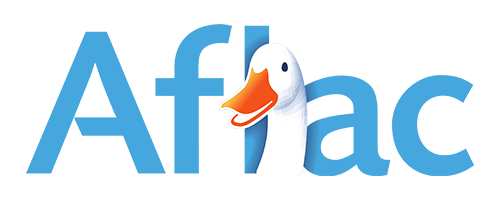Health Insurance Costs in Colorado 2025: Rates & Savings
How Much Is Health Insurance in Colorado in 2025? Costs for Singles, Families, Self-Employed, and Seniors

Health insurance costs in Colorado for 2025 and the transition into 2026 are changing rapidly, driven primarily by the scheduled expiration of enhanced premium tax credits and subsequent state responses. This article breaks down projected premium changes, gives concrete dollar and percentage examples for singles, families, the self-employed, and near–senior marketplace customers, and outlines practical steps to reduce total yearly healthcare costs. Readers will learn statewide headline projections, sample monthly and annual premium ranges, how Colorado’s Premium Assistance is intended to blunt increases, and actionable enrollment strategies for open enrollment windows. The guide draws on Colorado–specific programs and marketplace mechanics—such as Connect for Health Colorado and the Colorado Division of Insurance—and provides checklists, comparison tables, and EAV-style tables to help estimate personal impact. Throughout, we explain which groups are most exposed to higher net premiums, how subsidies stack, and when a broker can help navigate options at no additional cost.
What Are the Projected Colorado Health Insurance Premiums for 2025 and 2026?

Colorado’s statewide projections for 2026 show very large net premium increases for marketplace customers after federal enhanced premium tax credits (ePTCs) expire, with state mitigation narrowing but not eliminating the impact. Recent analyses cited statewide average net premium increases in the range of roughly 101% year-over-year for 2026, driven by the sudden loss of federal ePTCs and insurers’ rate adjustments responding to claims trends. Regional variability is substantial: rural counties and older age cohorts face well above–average impacts, while lower–income households may see more targeted state assistance. Understanding headline statewide numbers is essential for budgeting and assessing whether to change plan tier, adjust household income estimates for subsidies, or seek local help during open enrollment.
Why these statewide projections matter leads directly to the causes: federal subsidy changes, insurer rate filings, and the state steps taken to blunt the shock. The next subsections explain causes, quantify average increases across Colorado, show before/after subsidy effects with a sample table, and summarize Colorado’s mitigation steps.
Why Are Health Insurance Premiums Increasing in Colorado for 2026?
Premiums are increasing primarily because federal enhanced premium tax credits that lowered net costs for many households are scheduled to end, which raises net premiums for affected marketplace enrollees. Insurers also filed new rates that reflect recent claims experience, higher medical cost trends, and uncertainty about enrollment churn, and those filings translate to higher gross premiums before subsidies. Policy changes at the federal and state level interact with market behavior: when subsidies shrink, people who previously paid low net premiums suddenly face steep monthly bills and may change plan selections, which in turn affects risk pools and insurer pricing. Recognizing these linked causes helps consumers anticipate both immediate premium shocks and the potential for further adjustments over 2026.
This causal overview leads naturally to concrete measures of how large the increases can be across the state and which communities will see the largest dollar changes.
How Much Will Average Premiums Increase Across Colorado?
Statewide headline projections indicate average net premium increases approaching or exceeding 100% for many marketplace customers in 2026, with notable variation by county and age. Analyses show some rural counties and older age brackets could face increases materially above the statewide average, while metro areas with higher concentrations of subsidy–eligible households may see moderated net increases due to Colorado’s targeted assistance. Gross premium changes (what carriers charge) and net premium changes (what consumers pay after subsidies) diverge sharply once ePTCs expire, so net impacts matter most for household budgets. Consumers should interpret percentage changes together with local plan offerings and personal subsidy eligibility to estimate actual dollar outcomes.
Different demographic groups and regions will experience the subsidy gap differently.
| Demographic / Region | Average Projected % Increase (Net) | Estimated Monthly $ Change |
|---|---|---|
| Statewide average | ~101% | +$200–$400 per household (illustrative) |
| Customers aged 55–64 | ~144% | +$300–$600 per person (illustrative) |
| Rural counties (high–impact examples) | 120–200% | +$250–$700 depending on plan |
| Low–income households (with state aid) | 40–80% net | +$50–$200 after Colorado assistance |
This table highlights variability rather than precise local quotes; use it as a planning framework rather than a substitute for a personalized estimate. Understanding regional differences prepares readers to weigh plan selection, state programs, and broker assistance in the next sections.
What Is the Impact of Expiring Federal Enhanced Premium Tax Credits?
When the federal enhanced premium tax credits expire, households that previously received larger subsidies will see their net monthly premiums rise substantially unless state assistance or other programs replace some of that support. For example, a hypothetical single adult at 200% of the federal poverty level (FPL) might have paid a modest net premium with ePTCs in place; without ePTCs, their monthly premium could increase by several hundred dollars depending on plan tier and age. Households above the traditional 400% FPL threshold are particularly exposed because they lose the enhanced federal help that temporarily extended subsidy eligibility. The immediate result is higher out–of–pocket monthly costs and potential changes in enrollment behavior that can further affect carrier pricing.
Because the arithmetic of subsidy change is a principal driver of household budget shocks, the next section summarizes how Colorado’s state program aims to blunt these increases for eligible Coloradans.
How Is Colorado Mitigating Premium Increases with State Assistance Programs?
Colorado allocated state resources to blunt the worst effects of ePTC expiration through a dedicated Colorado Premium Assistance program and other legislative measures totaling significant funding to reduce net premiums for eligible enrollees. The intent is to layer state funds with federal subsidies where available, narrowing net premium increases so fewer families and individuals face catastrophic month–to–month shocks. Assistance targets vary by income, age group, and geographic need, prioritizing those who lose the most federal support and those in high–impact rural counties. Consumers should note that state mitigation reduces but may not fully offset gross carrier rate increases, so personal plan choice and subsidy optimization remain important.
Having seen statewide projections and state mitigation, the following H2 turns to single adults and concrete plan tier comparisons for individual market choices.
How Much Will Individual Health Insurance Cost for Singles in Colorado in 2025/2026?
Single adults in Colorado will see a broad range of monthly premiums in 2025 and into 2026 depending on plan tier, age, location, and subsidy eligibility; typical ranges vary from low–premium Bronze options with high deductibles to richer Gold plans with higher premiums but lower out–of–pocket costs. Net cost depends heavily on whether the household receives federal enhanced premium tax credits and how Colorado Premium Assistance applies. For budget planning, consider both monthly premiums and expected out–of–pocket spending for the year because a low monthly premium can come with high deductibles and surprise costs. Practical cost management includes comparing total annual expected costs, verifying network coverage, and estimating medication and specialist usage.
The subsections below provide average premium ranges by tier and age, concrete examples showing how subsidy changes affect single adults, and guidance on which low–premium plans make sense under different circumstances.
What Are the Average Premiums for Single Individuals in Colorado?
Average monthly premiums for single adults vary by plan tier and age. At the gross level, Bronze plans typically offer the lowest monthly premiums and highest deductibles, Silver plans balance premium and cost–sharing, and Gold plans carry higher premiums with lower out–of–pocket exposure; age differences can more than double premiums between young adults and near–seniors on the individual market. Geographic variation also matters: carriers price plans differently across rating regions and counties, so two people of the same age and income can face materially different gross premiums. For realistic budgeting, calculate both the monthly premium and expected care costs across a 12–month horizon.
To compare net cost, the table below shows representative single monthly premium ranges by plan tier and an illustrative net cost column noting subsidy dependence.
| Plan Tier | Average Monthly Premium (Gross) | Estimated Net Cost With/Without Subsidy |
|---|---|---|
| Bronze | $200–$500 | With subsidy: $0–$150; Without: $200–$500 |
| Silver | $300–$700 | With subsidy: $25–$250; Without: $300–$700 |
| Gold | $450–$900 | With subsidy: $150–$500; Without: $450–$900 |
These ranges are illustrative and vary by age and county; the key takeaway is that subsidy status dramatically changes net cost for singles and should guide plan tier selection.
How Do Subsidy Changes Affect Single Adults’ Health Insurance Costs?
Subsidy changes alter net premiums in dollar terms more than gross carrier pricing does, so single adults who lose enhanced federal tax credits may see monthly bills jump by hundreds of dollars if no state aid applies. For example, a single adult at 200% FPL who previously had a small net premium could see an increase of $150–$350 per month when ePTCs end, while someone at 450% FPL might see an even larger proportional jump because they lose most subsidy eligibility under traditional rules. The recommendation is to run a marketplace subsidy estimate with current income projections and to consider strategies such as adjusting household income reporting when appropriate, selecting a different plan tier, or applying for state assistance where eligible. Checking subsidy eligibility early in the enrollment window gives time to evaluate alternatives.
Understanding cheapest plan types helps single adults choose when a low premium strategy makes sense versus when stronger coverage is worth the extra cost.
What Are the Cheapest Individual Health Insurance Plans Available in Colorado?
The cheapest individual plans are usually Bronze or narrow–network Silver plans designed to minimize monthly premiums at the cost of higher deductibles, larger coinsurance, and limited provider networks. These plans make sense for younger, healthier adults with low expected medical use who mainly want protection against catastrophic events. Trade–offs include higher out–of–pocket exposure for prescriptions and specialist care, greater likelihood of balance billing in some settings, and the need for an emergency fund to cover high deductibles. Working with a broker or using Connect for Health Colorado tools to compare total annual costs—premium plus expected out–of–pocket—helps identify when a low–premium plan truly saves money over the year.
A short checklist helps single adults evaluate whether a cheap plan is the right fit.
- Assess your expected healthcare usage for the year (visits, prescriptions, planned procedures).
- Compare total yearly cost (premium + expected OOP) for at least three plans.
- Confirm provider network and prescription formulary for each option.
- Consider catastrophic protection versus predictable monthly budgeting.
- Consult a broker if you have chronic conditions or complex medication needs.
These steps lead into family cost estimates and how household composition affects subsidy layering and net premium outcomes.
What Are the Health Insurance Premiums for Families in Colorado in 2025/2026?
Family premiums scale with household size and income, and subsidy calculations account for total household income and number of dependents, producing very different net costs across income brackets. A family of four near common income benchmarks can see widely varying annual premiums depending on whether federal ePTCs are in place and how Colorado Premium Assistance layers on top. Families should prioritize estimating total household responsibility for premiums and expected care, because pediatric care, maternity, and chronic condition management can produce predictable costs that favor richer plan tiers despite higher monthly premiums. The following subsections show example family scenarios, explain how federal and state subsidies interact, and list state programs aimed at helping families afford coverage.
How Much Will Health Insurance Cost for a Family of Four in Colorado?
A family of four’s annual premium depends on household income, plan tier, and geographic rating region; typical annual gross premiums for a middle–income family can range from several thousand to tens of thousands of dollars before subsidies. As an illustrative benchmark, families at 200% FPL may pay modest net premiums with state and federal aid, while families above 400% FPL without enhanced federal credits face much higher net costs. Rural families can face higher premiums or fewer plan choices, increasing variability. To illustrate, here are two simplified scenarios showing annual premium impacts for a family of four at different income points and regions.
The table below compares representative family income brackets with estimated annual premium outcomes to demonstrate subsidy effects.
| Family Income Bracket | Subsidy Eligibility / Typical Net Premium | Estimated Annual Premium (Family of Four) |
|---|---|---|
| 150–250% FPL | High federal + state aid | $0–$3,000 |
| ~400% FPL | Limited federal aid without enhancements | $6,000–$12,000 |
| Above 400% FPL | Little federal aid; state aid variable | $12,000–$24,000+ |
These numbers are illustrative and depend on plan choices and county differences; families should model actual premium estimates through marketplace calculators and broker support.
How Do Federal and State Subsidies Affect Family Health Insurance Costs?
Federal ePTCs reduce the portion of premiums families pay each month by capping contributions relative to income; when ePTCs expire, Colorado’s Premium Assistance can be layered to partially replace lost federal support for eligible households. Eligibility thresholds and the interaction between federal and state subsidies determine net premiums: lower–income families typically retain more assistance, while families near or above 400% FPL lose the most federal benefit and rely heavily on any state program to offset increases. The practical stepwise approach is to compute gross premium, apply federal credits based on household income and size, and then identify any available state assistance to arrive at the estimated net monthly premium.
Understanding where to find and apply for state help is critical for families facing higher bills in 2026.
What State Programs Help Families Afford Health Insurance in Colorado?
Colorado’s primary mitigation is the Colorado Premium Assistance program funded through state appropriations intended to reduce net premiums for eligible marketplace households. The program targets households that lose enhanced federal subsidies, with funding allocated to blunt the percentage increase in net premiums; administrators layer state payments with federal credits to reach lower consumer costs. Application and eligibility steps typically flow through the state marketplace and enrollment assistance channels, where families can verify qualification and see applied reductions in their prospective plan quotes. For complex family situations—such as mixed–immigration status households, fluctuating income, or rural coverage constraints—working with local navigators or brokers can speed correct subsidy application and enrollment.
Practical next steps for self–employed Coloradans follow, including marketplace supports and tax implications.
What Are the Health Insurance Options and Costs for Self–Employed Coloradans in 2025/2026?

Self–employed Coloradans access the individual marketplace through Connect for Health Colorado, with subsidy eligibility determined by household income and reported business income; options include individual market plans, association or small–group arrangements where available, and tax considerations that influence net cost. Self–employed people can deduct health insurance premiums in many cases via the self–employed health insurance deduction on federal returns, which affects after–tax cost but does not directly change marketplace subsidy calculations in all scenarios. Practical strategies for the self–employed include accurate income projection for subsidy eligibility, embracing HSA–eligible high–deductible plans if appropriate, and comparing total annual costs—not only monthly premiums. The following subsections describe how Connect for Health Colorado supports the self–employed, outline tax implications at a high level, and offer search strategies for affordable coverage.
How Does Connect for Health Colorado Support Self–Employed Individuals?
Connect for Health Colorado provides tools to estimate subsidies, compare plan networks and formularies, and connect applicants with certified enrollment brokers or navigators who can assist with documentation and special enrollment circumstances. Self–employed applicants should prepare documentation of estimated business income, recent tax returns, and expected household earnings to get accurate subsidy estimates during enrollment. The marketplace also provides calculators and plan comparison pages to evaluate total cost across plan tiers, including HSA–eligible options. Using these marketplace tools early in the enrollment period helps the self–employed choose plans that balance premium affordability with appropriate protection against high medical costs.
These marketplace supports transition logically into tax considerations that affect the self–employed’s net cost of coverage.
What Are the Tax Implications of Health Insurance for the Self–Employed?
At a high level, many self–employed individuals can claim the self–employed health insurance deduction to reduce taxable income for federal purposes, lowering after–tax cost of premiums; this deduction phase interacts with whether the individual claims other business expenses and how household income is calculated for subsidies. Record–keeping is essential: save premium invoices, Form 1095 documents, and accurate business income records to support deductions and marketplace income attestation. Complex cases—such as owners paying themselves irregular wages or those with multi–member businesses—should consult a tax advisor to align premium deduction strategy with subsidy optimization. Thoughtful tax planning can materially reduce net annual cost even if monthly premiums remain unchanged.
Practical search strategies and broker use conclude this section with steps to shop efficiently.
How Can Self–Employed Coloradans Find Affordable Health Insurance Plans?
Self–employed Coloradans should compare plans using a checklist focused on total annual cost, network adequacy, prescription coverage, and HSA compatibility if they want tax–advantaged savings. Start by projecting annual business and household income to estimate federal subsidies, then compare 3–4 commonly available plans using expected visit and medication needs to estimate yearly out–of–pocket spending. Consider high–deductible HSA plans if you can contribute regularly to the HSA and are in good health, or choose richer Silver/Gold plans if you anticipate predictable medical needs. Finally, consult a broker to verify subsidy calculations and review small–group or association options that might be available based on trade groups or local associations.
A concise list of search steps helps organize the shopping process.
- Project your annual household and business income accurately before enrollment.
- Run subsidy estimates on marketplace tools for multiple income scenarios.
- Compare total yearly cost for each plan including premiums and expected OOP.
- Verify provider networks and prescription coverage for key medications.
- Consult a broker for complex scenarios or to check for association plan eligibility.
These actions lead into the next major section addressing seniors and near–seniors, who face distinct premium dynamics.
How Much Will Health Insurance Cost for Seniors in Colorado in 2025/2026?
Seniors split into two distinct groups for budgeting: near–seniors (age 55–64) who remain on the individual marketplace, and Medicare–eligible adults (65+) who choose between Medicare Advantage and Medigap (supplement) plans. Marketplace customers aged 55–64 face some of the largest percentage net premium increases after ePTC expiration, with analyses citing average net increases around 144% for this cohort in 2026. For those turning 65, Medicare options often provide more predictable cost structures, though Medicare Advantage premiums and Medigap plan costs vary by county and carrier. The following subsections quantify marketplace impacts for 55–64, compare Medicare options to individual market plans, and offer representative cost ranges for Medicare Advantage and Supplement plans in Colorado.
What Are the Premium Increases for Marketplace Customers Aged 55–64?
Marketplace customers aged 55–64 are disproportionately affected by subsidy expirations because older age bands face higher base premiums and therefore lose more in absolute subsidy dollars when ePTCs end. Cited analyses estimate average net increases near 144% for this group, translating to monthly increases that can exceed several hundred dollars per person depending on plan tier and location. The combination of higher baseline premiums and subsidy removal produces both steep percentage and dollar impacts, prompting many near–seniors to reassess whether remaining on the individual market is sustainable. Options to mitigate include applying for state assistance where eligible, choosing high–deductible plans temporarily, or preparing to transition to Medicare at 65 with careful comparison of benefits and costs.
Given these pressures, comparing Medicare alternatives becomes an important planning step for those approaching eligibility.
How Do Medicare Plans Compare to Individual Market Plans for Seniors?
Medicare (Part A/B plus Part D and supplemental coverage) differs from marketplace plans in structure: Medicare provides a defined federal benefit with supplemental options for additional coverage, while individual market plans vary by carrier with their own networks and cost–sharing. Medicare Advantage plans bundle Part A/B benefits and often include Part D in a single managed plan with different network structures and potentially low premiums but higher prior authorization or network limits. Medigap (Medicare Supplement) plans cover many cost–sharing gaps in Original Medicare but add a separate premium; combined premiums and drug coverage choices determine total cost. For many older adults, comparing Medicare options to marketplace plans requires assessing provider continuity, expected drug costs, and total annual cost rather than simply comparing monthly premiums.
Concrete representative cost ranges help illustrate typical premium expectations for Medicare options in Colorado.
What Are the Costs of Medicare Supplement and Advantage Plans in Colorado?
Representative monthly premiums for Medicare Advantage plans in Colorado can range from low–cost options with $0–$50 premiums to mid–range plans with higher premiums depending on supplemental benefits, network breadth, and county. Medicare Supplement (Medigap) plan premiums vary by plan type (Plan G, Plan N, etc.), age rating, and insurer, producing monthly ranges that commonly start in the low hundreds and increase with age and location. Factors such as zip code, carrier underwriting, and inclusion of dental/vision coverage influence final pricing, so obtaining localized quotes is essential. For precise local cost comparisons and to explore Medicare–related enrollment assistance, consulting a Medicare–focused broker or certified counselor is advisable.
The next section provides step–by–step open enrollment guidance, deadlines, and how brokers can assist during the enrollment season.
How Can Coloradans Navigate Open Enrollment for Health Insurance in 2025/2026?
Navigating open enrollment requires knowing key dates, gathering documentation, comparing total costs for multiple plans, and seeking assistance when subsidy calculations or household situations are complex. Connect for Health Colorado enrollment windows and Medicare enrollment periods differ, so mark deadlines early and prepare income verification, current policy information, list of providers, and medication lists to compare formularies. A structured approach—collect documents, estimate income, compare total costs, confirm network and pharmacy coverage, and complete enrollment ahead of deadlines—reduces errors and missed subsidy opportunities. The following subsections list important deadlines, describe how a local broker helps, and provide a practical stepwise checklist to choose the right plan.
What Are the Important Open Enrollment Deadlines for Medicare and Connect for Health Colorado?
Open enrollment windows vary: Medicare has an annual Annual Enrollment Period for Advantage and Part D, while Connect for Health Colorado has a separate annual open enrollment period with exact dates announced each year; special enrollment periods exist for qualifying life events. It is important to verify current official dates as they can shift and to act promptly if you qualify for a special enrollment period due to events like marriage, birth, loss of other coverage, or relocation. Missing the open enrollment window can leave consumers without options until the next year unless they qualify for a special enrollment period, so planning ahead is crucial. Keep documentation handy to claim special enrollment when eligible and to speed subsidy verification.
Knowing how a local broker can help during enrollment is the next critical piece.
How Can a Local Broker Help You Find Affordable Coverage During Open Enrollment?
A local broker assists by comparing plan options across carriers, optimizing subsidy outcomes through accurate income and household reporting, and guiding applicants through enrollment steps and appeals if necessary; importantly, in Colorado broker services are provided at no additional cost to the consumer because commissions are included in plan prices under state law. Brokers can run side–by–side cost comparisons that include expected out–of–pocket spending, check network adequacy for specific providers, verify formulary coverage for essential medicines, and walk clients through documentation needed for subsidy determinations. Using a broker early in the enrollment window helps identify subsidy–eligible paths and avoids last–minute mistakes that could reduce financial assistance. For consumers facing complex subsidy or medical situations, broker expertise can translate into substantial monthly savings and fewer administrative issues.
Knowing broker roles leads naturally to the practical steps you should take to choose the right plan during enrollment.
What Steps Should You Take to Choose the Right Health Insurance Plan?
Choosing the right plan involves a structured checklist: assess expected healthcare usage, estimate total yearly costs (premium + expected out–of–pocket), confirm provider network and prescription coverage, and evaluate subsidy eligibility under current federal and state programs. Collect pay stubs or income projections, list regular medications and providers, and compare at least three plans across different tiers to understand trade–offs between premium and cost–sharing. Consider HSA–eligible high–deductible plans if you can fund an HSA and expect low utilization, or select Silver/Gold options if you anticipate predictable medical needs. Finally, consult a broker for personalized guidance if your household has complex needs, fluctuating income, or multi–state coverage questions.
The final major section explains available financial assistance and how eligibility and program mechanics will affect net premiums after federal changes.
What Financial Assistance and Subsidy Programs Are Available for Colorado Health Insurance in 2025/2026?
Financial assistance in Colorado comes from federal premium tax credits and state programs like Colorado Premium Assistance, each with its own eligibility and mechanics that determine how much net premium a household pays. Federal enhanced premium tax credits historically capped household contributions at set percentages of income, but expiration of ePTCs reduces or eliminates those larger credits for many households. Colorado’s Premium Assistance aims to partially replace lost federal support for eligible residents by layering state funds on top of federal credits where applicable. Knowing eligibility criteria, application channels, and how assistance is applied helps consumers estimate net premiums and prioritize actions such as income documentation, enrollment timing, and broker consultation.
The subsections below summarize eligibility rules, program mechanics, and recommended consumer actions when federal enhanced credits expire.
What Are the Eligibility Requirements for Federal and State Health Insurance Subsidies?
Federal premium tax credit eligibility largely depends on household income relative to the federal poverty level, household size, and lack of access to affordable employer–sponsored insurance, with Medicaid eligibility separate and based on income thresholds. State programs like Colorado Premium Assistance target households that lose enhanced federal subsidies and generally follow income–based prioritization while using the marketplace to apply assistance. Special cases—such as recent immigrants, mixed–status households, and those with special enrollment circumstances—require careful verification of eligibility rules and may rely on navigators or brokers for correct application. Always confirm eligibility with official marketplace tools and consider consulting a broker to model subsidy outcomes under different income scenarios.
How Does the Colorado Premium Assistance Program Reduce Premium Costs?
Colorado Premium Assistance provides state funds to lower net premiums for eligible marketplace enrollees by supplementing federal credits or by directly reducing consumer premium obligations where federal credits are insufficient. The program’s goal and funding scale are intended to reduce projected statewide net increases substantially, though the exact dollar impact varies by household income and plan selection. Assistance is applied through the marketplace quote process so consumers see net prices after state aid when they shop for plans; households must complete marketplace enrollment steps and provide required income information to have assistance factored into quotes. For personalized estimates and to understand whether you qualify, use marketplace tools or work with a broker who can model state aid interactions.
What Happens When Federal Enhanced Premium Tax Credits Expire at the End of 2025?
When enhanced federal premium tax credits expire, many marketplace consumers face substantially higher net premiums, with the most severe effects among households above 400% FPL, those aged 55–64, and residents in certain rural counties where plan choices and pricing are limited. The scale of impact will vary, but state assistance aims to reduce the worst outcomes for eligible households; consumers should expect higher monthly costs on average and prepare by evaluating subsidy eligibility, considering plan tier changes, and consulting a broker if needed. Recommended immediate actions include estimating the new net premium using updated income projections, applying for Colorado Premium Assistance if eligible, and reviewing plan networks and formularies before enrollment closes. Taking these steps early can reduce financial shock and help secure a plan that balances monthly affordability and needed coverage.
For readers who want personalized assistance, note that local broker help is available at no additional consumer cost.
For those seeking tailored guidance, Kelmeg and Associates, Inc. is a Colorado–based health insurance broker and consultant that specializes in Medicare, individual and family health insurance plans, and employer group benefits. Kelmeg provides local broker services designed to compare plans, optimize subsidy outcomes, and assist with enrollment logistics; in Colorado, broker services are included in plan pricing so consumers do not pay an extra fee for broker assistance. If you have a complex household situation, are approaching Medicare, or want help modeling subsidy scenarios, working with a local licensed broker can streamline enrollment and help you identify the most affordable, practical coverage for 2025/2026.
- Prepare your documents early: income estimates, current policy info, and medication lists.
- Compare total annual cost: premiums plus expected out–of–pocket expenses.
- Seek broker help: for subsidy optimization, plan comparisons, and enrollment assistance.
This article has provided Colorado–specific projections, demographic scenarios, subsidy mechanics, and practical next steps for consumers facing changing insurance costs in 2025 into 2026.
Frequently Asked Questions
1. What factors influence health insurance premiums in Colorado?
Health insurance premiums in Colorado are influenced by several factors, including age, geographic location, household income, and the specific plan tier selected (Bronze, Silver, Gold). Additionally, the expiration of federal enhanced premium tax credits (ePTCs) will significantly impact net premiums, especially for those who previously relied on these subsidies. Insurers also adjust rates based on claims experience and medical cost trends, which can vary widely across different regions and demographic groups.
2. How can I estimate my health insurance costs for 2025/2026?
To estimate your health insurance costs for 2025/2026, start by determining your household income and size, as these factors influence subsidy eligibility. Use the Connect for Health Colorado marketplace tools to input your information and receive premium quotes based on different plan tiers. Additionally, consider your expected healthcare usage, including doctor visits and medications, to calculate potential out-of-pocket expenses. This comprehensive approach will help you understand your total annual costs.
3. What should I do if I lose my federal premium tax credits?
If you lose your federal premium tax credits, first assess your eligibility for state assistance programs like Colorado Premium Assistance, which may help offset increased costs. Review your current plan and consider whether a different tier might be more affordable. It’s also advisable to consult with a local broker who can provide personalized guidance and help you navigate your options during the open enrollment period, ensuring you make informed decisions about your health coverage.
4. Are there specific health insurance options for low-income families in Colorado?
Yes, low-income families in Colorado may qualify for various assistance programs, including Medicaid and the Colorado Premium Assistance program. These programs are designed to help reduce the financial burden of health insurance premiums. Families with incomes between 150% and 250% of the federal poverty level can receive significant federal and state aid, making health insurance more affordable. It’s essential to explore these options through the Connect for Health Colorado marketplace to find the best fit for your needs.
5. How do I choose the right health insurance plan for my family?
Choosing the right health insurance plan for your family involves assessing your healthcare needs, estimating total costs (including premiums and out-of-pocket expenses), and confirming provider networks. Start by listing your family's expected medical usage, including regular doctor visits and medications. Compare at least three plans across different tiers to understand the trade-offs between premium costs and coverage. Consulting with a broker can also provide valuable insights tailored to your family's unique situation.
6. What are the implications of high deductibles in health insurance plans?
High deductibles in health insurance plans can lead to lower monthly premiums, making them attractive for individuals who anticipate low medical usage. However, they also mean that you will pay more out-of-pocket before your insurance coverage kicks in. This can be a financial strain if unexpected medical needs arise. It's crucial to evaluate your health status and financial situation before choosing a high-deductible plan, and consider setting up an emergency fund or Health Savings Account (HSA) to cover potential costs.
7. How can I find a local broker to assist with my health insurance needs?
To find a local broker in Colorado, you can start by visiting the Connect for Health Colorado website, which provides resources and listings of certified brokers. Local brokers can help you navigate the health insurance marketplace, compare plans, and optimize your subsidy eligibility. Since broker services are included in plan pricing at no additional cost to consumers, working with a broker can be a valuable resource for understanding your options and making informed decisions about your health coverage.
Conclusion
Understanding the projected health insurance costs in Colorado for 2025 and 2026 is crucial for effective budgeting and planning, especially as federal subsidies change. By leveraging state assistance programs and exploring various plan options, individuals and families can mitigate the impact of rising premiums. We encourage you to assess your eligibility for available subsidies and consult with a local broker to navigate your choices effectively. Take the next step towards securing the best health coverage for your needs today.













